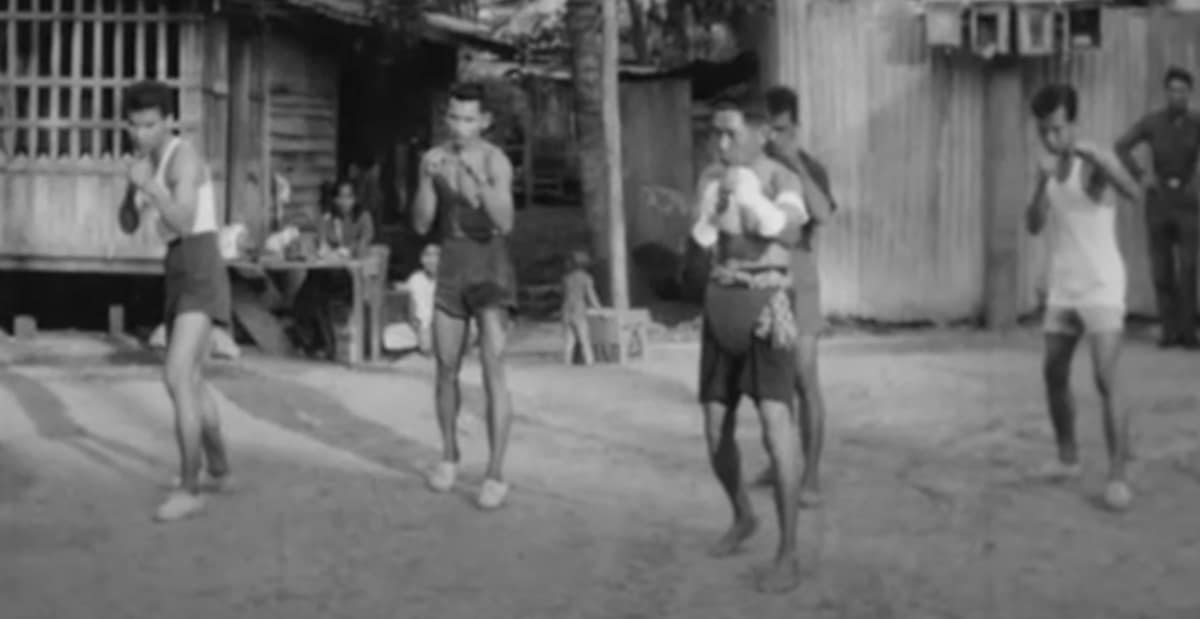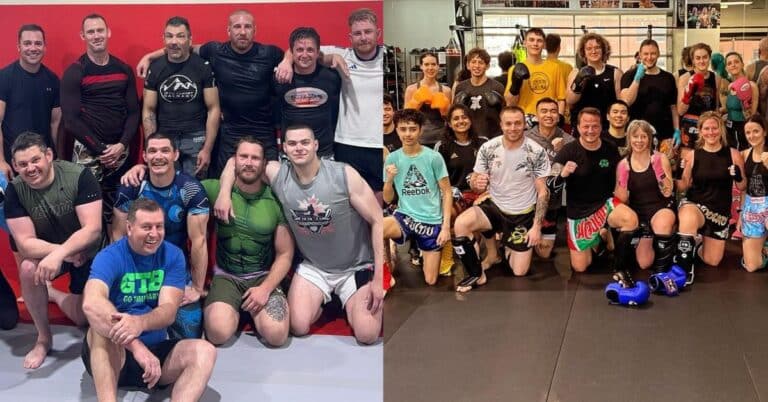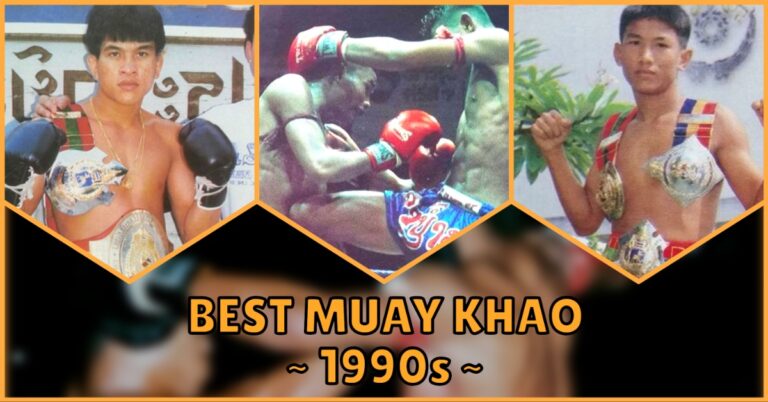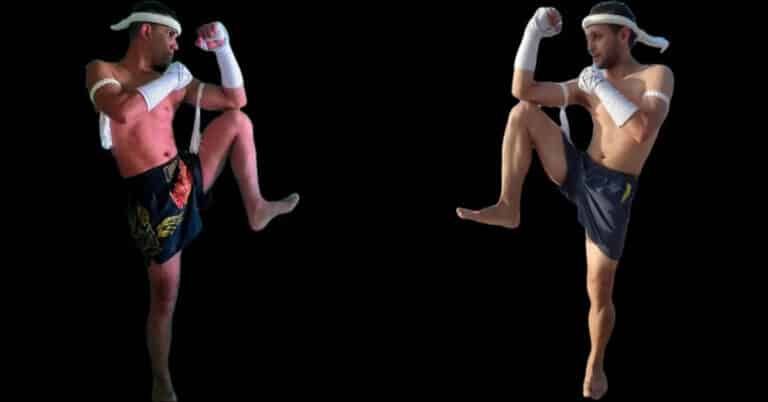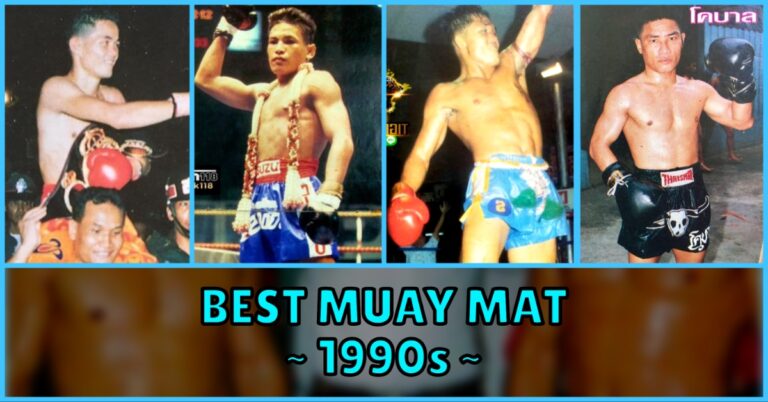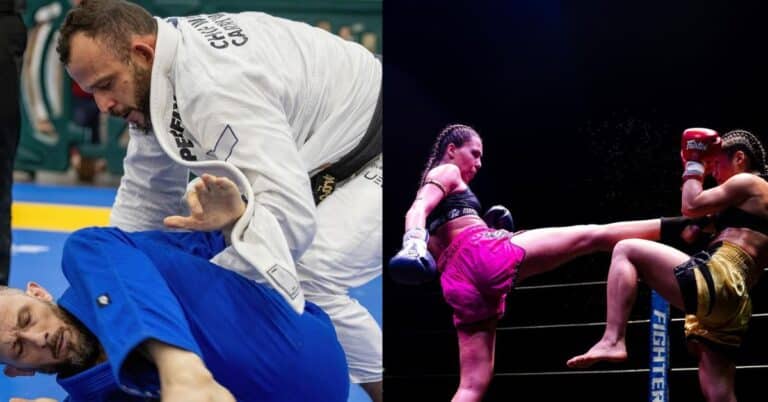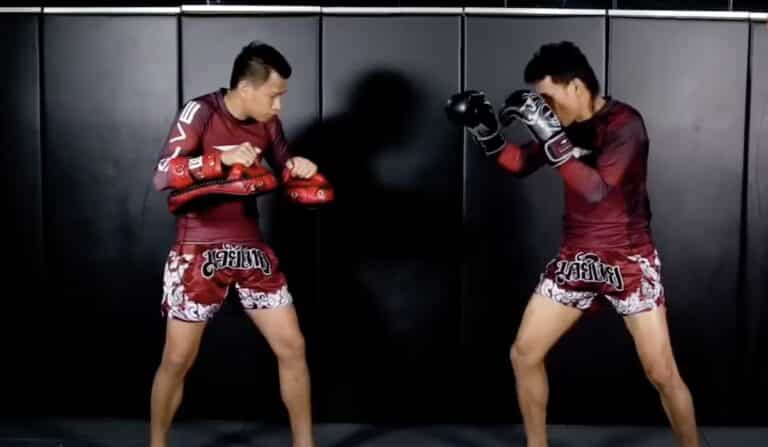What is Muay Korat?
Muay Korat is an archaic Thai martial art. It is one of the forms of Muay Boran, which is the term used to refer to Muay Thai before it was given formalized universal rules. Muay Korat is easily recognizable with its wrapped forearms, heavy punches, and tree kicking.
Before there was Muay Thai, conquering audiences of Thailand, the citizen of the nation enjoyed Muay Boran. Boran had several different styles typically based on the region it originated from.
The combat sport system Muay Korat originally came from the North-East area of Thailand which is currently named Nakhon Ratchasima, the nickname for this region is Korat.
Muay Korat Style and Tenchiques
Muay Korat has an extremely unique and recognizable style. The striking system is built around wide and heavy punches. Fighters have their hands wrapped right up their elbow. This is to protect their fist from damage. Additionally, the wrapped forearm can be used as a block while keeping the arm safe.
All strikes from the Muay Korat style are meant to be thrown with absolute power. The idea behind each strike is to enhance the force of the attack. This often means leaning back, the charge up an attack, and then springing forward with maximum force.
Fighters would strengthen their shins and fists by striking banana tree trunks. An instructor of Muay Chaiya, another form of Muay Boran, once said that a kick from a Muay Korat fighter could detach a fighter’s head from their body. Not unlike a ‘Fatality’ in Mortal Kombat.
In a one-on-one match, a Muay Korat fighter would throw wide punches and kicks in a large arch with full force. If the fight came in close, they would switch to straight knee strikes to their opponent.
Because some highly talented Muay Korat instructors survived into the 20th century, there is much we know about the standard maneuvers and attacks utilized in this sport. The records on these are well-kept.
There are five basic strikes that a Muay Korat Nak Muay (Fighter) must master. These are the five Mae Mai’s, otherwise known as fundament techniques.
- Fake lead punch, and teep kick – Pull the punch back, luring in your opponent, and then kick the opponent’s chest or head.
- Cover up and strike with elbows – Using a double forearm guard, block punches, and return with elbows.
- Shoulder punch – Roll off the opponent’s strike and punch their shoulder.
- Initiate with a hook punch, and finish with a straight strike – To interrupt the opponent’s standard block, one should open with a hook, and finish with a straight.
- Colliding punch – Tuck your chin and throw a powerful punch at the same time that your opponent begins their strike.
In addition to the above five basics, there are twenty-one advanced techniques which fighters may have the honor of learning of learning. These are the twenty-one high-level Mai Mai’s:
- Tadmala, which means ‘Putting a flower on the ear’ – Cover your ear with an elbow or fist, and counter with a punch or elbow.
- Ka Cheek Rang, which means ‘A raven tearing up the nest’ – If your opponent has blocked with a double forearm guard, pull the guard open and kick them.
- Hanuman Tawai Waen which means ‘Hanuman offering the rings’ – Lify your opponent’s elbow up and then punch their face.
- Lom Ploy Aye which means ‘When the enemy falls, you feel embarrassed too’ – If your opponents hits the ground, you also fall on top of them and strike them.
- Ling Ching Look Mai which means ‘Monkeys fighting for fruit’ – Sweep their kick attempt away, and then follow up with two uppercuts.
- Kumphakan Hak Hok which means ‘Kumphakan breaking the spear’ – Grab your opponent’s kick, and elbow their leg.
- Rusi Long Sa which means ‘A hermit entering the pond’ – When your opponent throws a high kick, duck under them, and pick them up for a slam.
- Tosakan Sok which means ‘Mourning Ravana’ – If your opponent performs a jump kick, counter with a punch to the head
- Tapian Fang Toh which means ’A carp hiding between stumps’ – Bend down and put your hand on the opponent’s leg, then punch them in the torso.
- Nok Koom Kao Rang which means ‘A quail entering the nest’– Lift your opponent’s hands away from them to strike them in the chest.
- Kotchasarn Kwat Ya which means ‘An elephant sweeping grass’ – Fake a hook, if they reach out to block, grab their fist and put it under your underarm to lock them in, and follow up with head strikes.
- Hak Lak Phet which means ‘Breaking the diamond pole’ – To counter a kick, grab their attacking leg and kick out their base leg.
- Kotchasarn Tang Rong which means ‘An elephant destroying the hall’ – Leap to land a straight kick, follow up with two head punches.
- Hanuman Waek Fong which means ‘Hanuman breaking bubbles’ – Fake a punch, dodge to the side, place both hands on the ground, kick the opponent in their head, then move behind them.
- Ling Pliu which means ‘A flexible monkey’ – Fake a punch, bend down, throw a spinning back elbow.
- Nok Ka Lot Huang which means ‘A raven going through a hoop’ – Dodge their kick and follow up with a punch of your own.
- Hanuman Bag Phra which means ‘Hanuman carrying a monk’ – When your opponent performs a jumping kick, duck between their legs, grab under the underarm and leg, lift and throw.
- Noo Tai Rao which means ‘A mouse scaling a tight rope’ – To counter an opponent’s punch, dodge off the center line, then counter.
- Talop Nok which means ‘Aatching a bird with a net’ – Fake a punch to the chest, if they block, elbow the head.
- Kohok which means ‘Telling a lie’ – Fake a punch, if they block, throw many more strikes to overwhelm them.
- Hanuman Torn Toh which means ‘Hanuman removing a stump’ – If your opponent throws a kick, grab and lift in the air, so you can kick them in the groin.
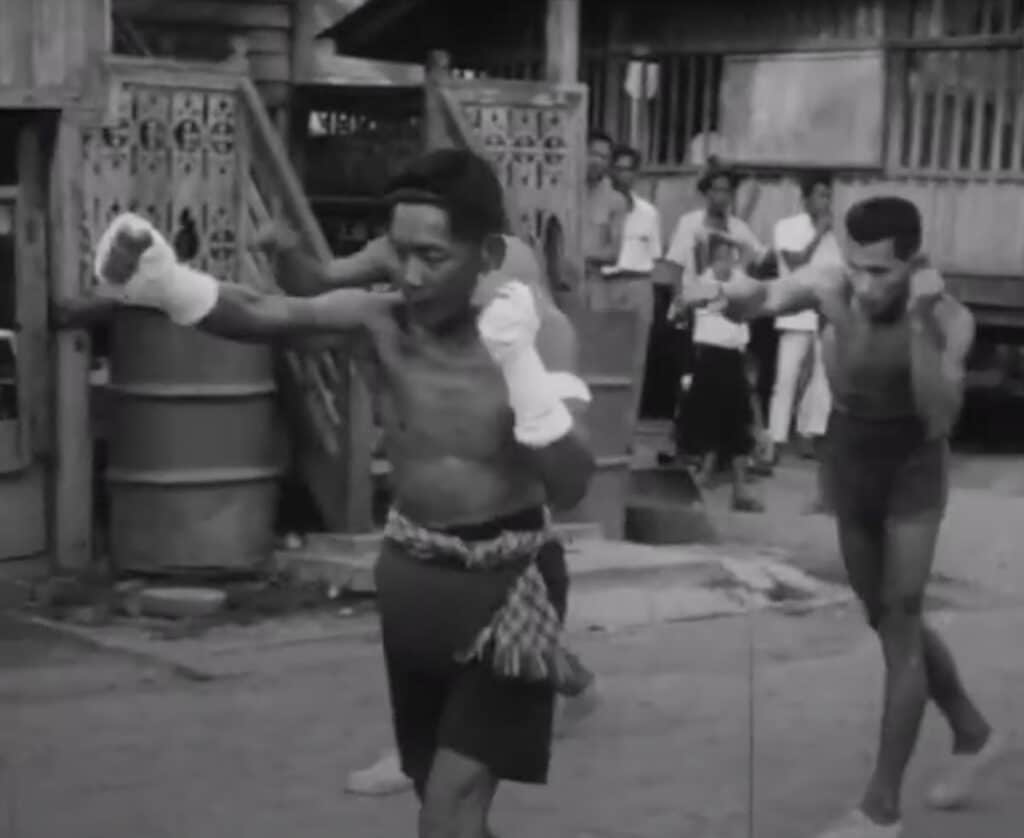
Muay Korat in Combat
The 20th-century Grand Master who taught the above techniques was Kru Bua Wat Im. he began training when he was only 16 years old and was born in the late 1800s. In his lifetime, he would earn a rank in the military and teach soldiers unarmed combat.
Unlike a lot of Muay Boran, which is passed down throw oral stories, Kru Bua Wat Im was able to teach Muay Korat on film. There was a documentary film about the man during the 1960s for western audiences. He would also open the Soi Soda academy in Bangkok, Thailand which would eventually train world champions in Muay Thai.
Yang Hantalay was a Muay Korat fighter who would challenge himself by facing Tse Shang, a Chinese-born Kung Fu master. In this 1921 match, Muay Korat would dominantly win the day. Yang won via knockout in the first three minutes.
One famous Muay Korat fighter was Suk Prasat Hin Phimai who had hundreds of victories in Muay Thai and spent time in prison. His grandson would become one the greatest Muay Thai fighters in history: Sagat Petchyindee.

Muay Korat on the Battlefield
Most forms of Muay Boran were less concerned with sport-focused techniques and instead focused on actual combat that would be required on the battlefield. In the 19th century, Muay Korat proved itself in a war.
In 1826, Vientiane invaded Siam (Thailand) looking to conquer the entire nation. It started with the Nakhon Ratchasima province. In the city of Korat, the governor’s wife, Lady Mo, would use guerilla tactics to attack the enemy force. The attacks, utilizing Muay Koran, worked the invading army fled.
The King Rama III of Thailand bestowed Lady Mo with the title Lady Suranari which means ‘The Brave Lady.’ A statue still stands in her honor in the city center of Korat.
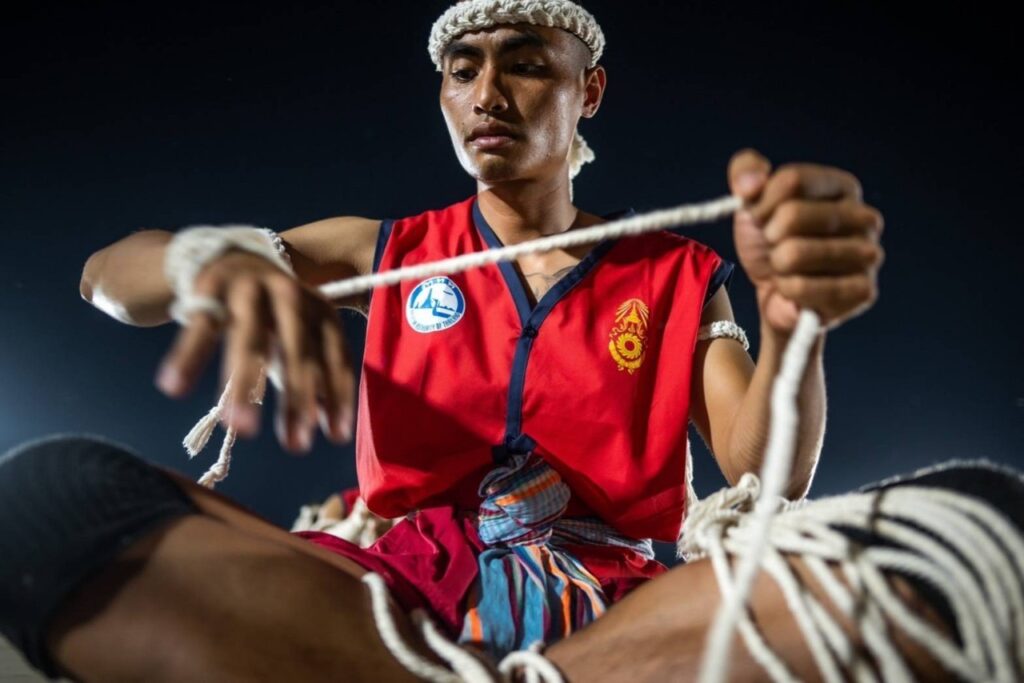
Other Muay Boran Styles
Muay Thai is standardized today due to decisions made nationally in 1920 Thailand. Everything before the 1920s was then declared to be Muay Boran. There are four basic styles of Muay Boran, one of which is Muay Korat.
The four styles of Muay Borat are:
- Muay Chaiya which originated in southern Thailand in the area named Chaiya. It was a form focused on quick punches and elbow strikes to counter the opponent.
- Muay Korat which originated from North East Thailand and focused on heavy fist strikes.
- Muay Lopburi which originated in central Thailand, in the city of Lopburi. It focused on fighting intelligence and spirit.
- Muay Tha Sao which originated from Northern Thailand and means ‘Monkey Feet.’ It focuses on movement and speed.
Prior to Muay Thai being formalized in the 20th century, Muay Korat matches were fought at Buddhist temples, typically during festivals or local celebrations. They would turn out thousands of spectators. Eventually, rings and boxing gloves would be added to matches and become the norm.
Muay Thai, Muay Boran, and Muay Korat are all different with the same aim: victory. They all find different ways to win. Whether it be in sport form or on the battlefield, Muay Korat was designed to be deadly.

